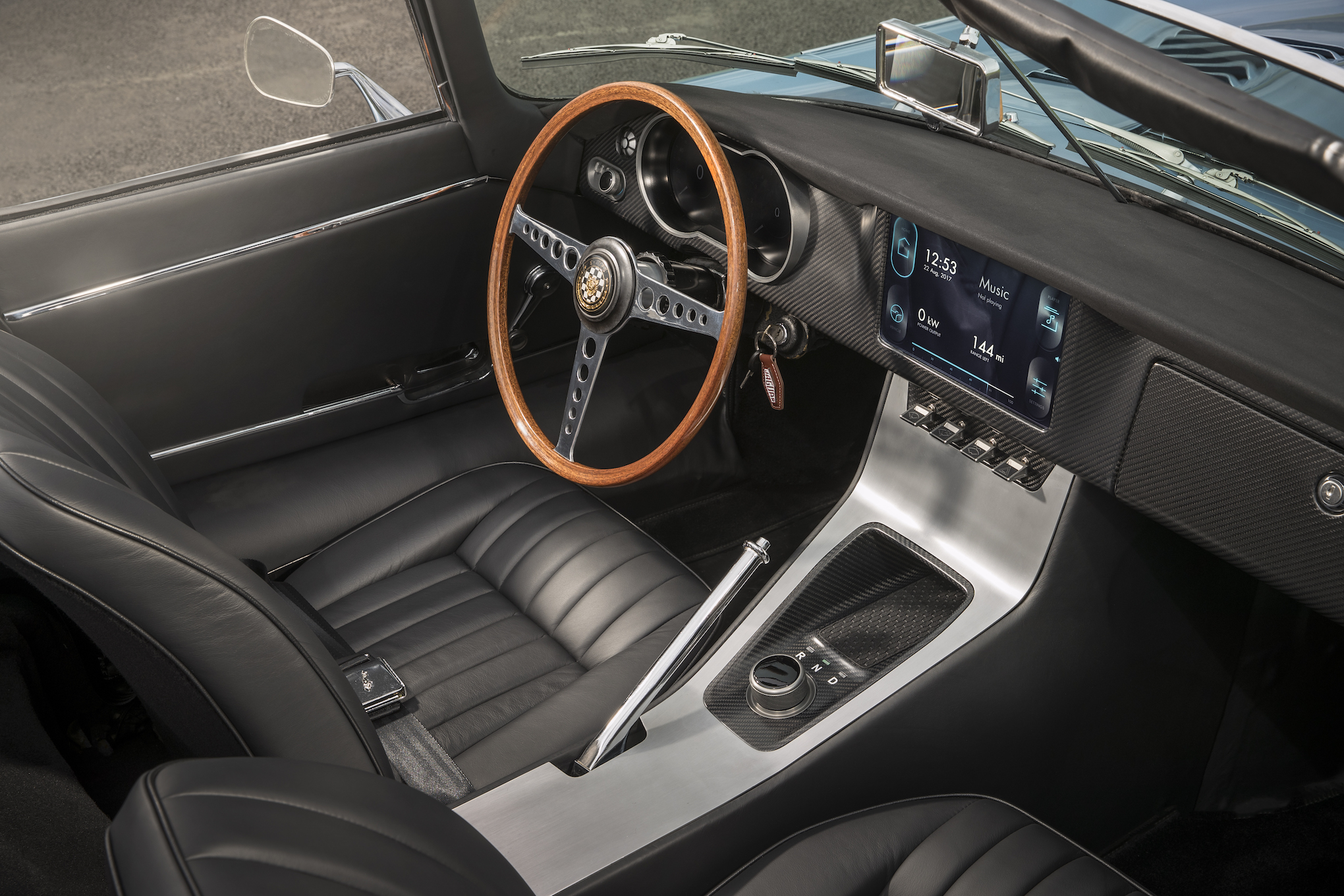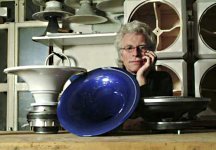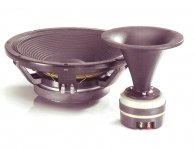Horn loading below 200Hz becomes challenging for a domestic living space...an 80Hz front horn has to be 122cm long!
Front loading to about 100-200Hz, back/rear loading below?
BTW, did you sim this horn?:
An externally hosted image should be here but it was not working when we last tested it.
An externally hosted image should be here but it was not working when we last tested it.
Covering the whole spectrum with a 2-way is not particularly difficult, but it becomes another story if SPLs > 110dB are required.
I guess the 2x18" open baffle Version wouldn't do 110 dB at LF either.
Regards
Charles
BTW, did you sim this horn?:
That was a design that I did a month ago but I've never built it. But here are some details on it.
- 500Hz CD Horn utilizing BG Neo8
- 13.50" Wide x 12.00" High x 6.75" Deep
Are you making music?! I have tested abl3 a bit.. its indeed good.
Occasionally, I do.
Compared to 10-15 years ago, DAW software, plug-ins, and controllers have been much improved, to the point that I don't see many benefits of using traditional modular / analogue equipment.
Joseph, it looks like you're working on some serious horn projects 
An externally hosted image should be here but it was not working when we last tested it.
Last edited:
I guess the 2x18" open baffle Version wouldn't do 110 dB at LF either.
Regards
Charles
No, it won't.
Max. SPL: 100 dB @ 25 Hz, 118 dB (60 Hz-20 kHz).
I believe it's quite easy to cover the whole spectrum as a two-way. I have a few designs that achieve this. The summer rain horn uses the Neo8 Planar Transducer to cover 200Hz - 20kHz. My ES300 Circular Pedal Horn covers 300Hz - 20kHz.
When you say “whole spectrum” can you be specific? For example my goal was to cover 30hz-20khz linear. Basically a f3 near 30hz. The design that you see in this thread meets those criteria, although it has to use active eq to get there, it does so with hi fidelity. How do the designs that present perform?
When you say “whole spectrum” can you be specific? For example my goal was to cover 30hz-20khz linear. Basically a f3 near 30hz. The design that you see in this thread meets those criteria, although it has to use active eq to get there, it does so with hi fidelity. How do the designs that present perform?
The NEO8 in the Summer Rain is flat from 200Hz to 20KHz. The Dayton Audio PA380-8 (15” woofer, 32Hz FS, 96dB@1watt) would be a good match.
The ES300 Pedal Horn using the Fostex FE126EN requires a passive contour network to flatten a midrange hump. But that’s simple to make. Sensitivity is 95dB@1watt through its bandwidth with the contour network.
Joseph, it looks like you're working on some serious horn projects
Yes I’m now self employed doing design consulting for other businesses or for individuals looking for a custom speaker design. I mainly do horn speakers for audiophile use. Five months ago I quit my job as a Manufacturing Engineering Specialist for a large Automotive Company so that I could pursue my dream of doing speaker design and custom audio products. I have 16 years of Mechanical Engineering experience to back it up. When I was a kid I had my Grandpa build my first speaker cabinet...to my hand sketch...the rest was history!
I recently bought a Professional CNC router as well for my basement workshop. It’s for building horns or bass cabinets.
This is illustrative of the anemia in the automotive industry:

What's left is just a glimpse of a past era.
An externally hosted image should be here but it was not working when we last tested it.
An externally hosted image should be here but it was not working when we last tested it.

What's left is just a glimpse of a past era.
Last edited:
Allright, back to 2-ways.
In view of my previous post, I realized that part of what makes loudspeaker technology so fascinating, this thread in particular, lies in the knowledge, parts and tools we use to tackle very complicated (physical) problems.
Because, basically the technology we're dealing with in this thread hasn't changed much for almost a century.
Ok, loudspeaker drivers have become better, we have advanced design and measurement software at our disposal, but overall we're still walking in the footsteps of the pioneers.
Which brings me back to a post on the psaudio website from only a few days ago, entitled “Munich, Part 4”.
"We’ve talked about “the Munich Show”, meaning the High End, as the big show is properly known, and we’ve talked about it as though it’s a monolith. In terms of size, it basically is. However, just as CES’ success back in the day inspired the creation of THE Show, a nearby, lower-cost show running at the same time in Las Vegas, Munich High End has hifideluxe (and yes, that’s how it’s pitched) just a shuttle ride away in Munich."
And:

"This is “Bullfrog” from Martion Audio, better known for giant spherical horns. It uses a coaxial driver, and was paired with tube amps from Rike Audio. Punchy and driving—but the Deutsche pop being played drove me away."
In view of my previous post, I realized that part of what makes loudspeaker technology so fascinating, this thread in particular, lies in the knowledge, parts and tools we use to tackle very complicated (physical) problems.
Because, basically the technology we're dealing with in this thread hasn't changed much for almost a century.
Ok, loudspeaker drivers have become better, we have advanced design and measurement software at our disposal, but overall we're still walking in the footsteps of the pioneers.
Which brings me back to a post on the psaudio website from only a few days ago, entitled “Munich, Part 4”.
"We’ve talked about “the Munich Show”, meaning the High End, as the big show is properly known, and we’ve talked about it as though it’s a monolith. In terms of size, it basically is. However, just as CES’ success back in the day inspired the creation of THE Show, a nearby, lower-cost show running at the same time in Las Vegas, Munich High End has hifideluxe (and yes, that’s how it’s pitched) just a shuttle ride away in Munich."
And:

"This is “Bullfrog” from Martion Audio, better known for giant spherical horns. It uses a coaxial driver, and was paired with tube amps from Rike Audio. Punchy and driving—but the Deutsche pop being played drove me away."
Last edited:
Martion Bullfrog Part II
This 2-way coaxial loudspeaker system has been around since 2003. The concept originates in the 90's, when Martion developed a compact PA loudspeaker, a pair of which had to fit in the boot of a VW Golf/Rabbit.
The current model is the 5th revision.
If we rely on Olson and others, the cube is about the worst shape for a direct radiator. Even more so if the driver sits right in the middle. Severe diffraction from the baffle edges and the worst standing waves inside the cab are to be expected.
On second thought, these issues may be minor or even neglectable in case of the Bullfrog.
- The woofer covers about 80% of the baffle, so there's hardly any baffle left
- The baffle edges are chamfered
- The compact closed cabinet is only 45x45x45cm and very solidly built with braces around the driver that effectively split up the cabinet in 4 small chambers.
Attached 2 pictures showing the inside of the cabinets, drivers and horns of older Martion products.
The compression drivers attached to the horns appear to be Altec, or GPA. At least the woofer on the right image is an RCF unit.
This 2-way coaxial loudspeaker system has been around since 2003. The concept originates in the 90's, when Martion developed a compact PA loudspeaker, a pair of which had to fit in the boot of a VW Golf/Rabbit.
The current model is the 5th revision.
If we rely on Olson and others, the cube is about the worst shape for a direct radiator. Even more so if the driver sits right in the middle. Severe diffraction from the baffle edges and the worst standing waves inside the cab are to be expected.
On second thought, these issues may be minor or even neglectable in case of the Bullfrog.
- The woofer covers about 80% of the baffle, so there's hardly any baffle left
- The baffle edges are chamfered
- The compact closed cabinet is only 45x45x45cm and very solidly built with braces around the driver that effectively split up the cabinet in 4 small chambers.
Attached 2 pictures showing the inside of the cabinets, drivers and horns of older Martion products.
The compression drivers attached to the horns appear to be Altec, or GPA. At least the woofer on the right image is an RCF unit.
Attachments
Last edited:
http://www.enjoythemusic.com/diy/0710/bofu/Bofu_Standmount.jpg
This was one of my better performing fullrange boxes. Undersized with a high-aspect too-low tuning for power handling reasons.
Diffraction was a non issue for the same reasons it will be in the bullfrog.
This was one of my better performing fullrange boxes. Undersized with a high-aspect too-low tuning for power handling reasons.
Diffraction was a non issue for the same reasons it will be in the bullfrog.
- Home
- Loudspeakers
- Multi-Way
- Is it possible to cover the whole spectrum, high SPL, low distortion with a 2-way?


